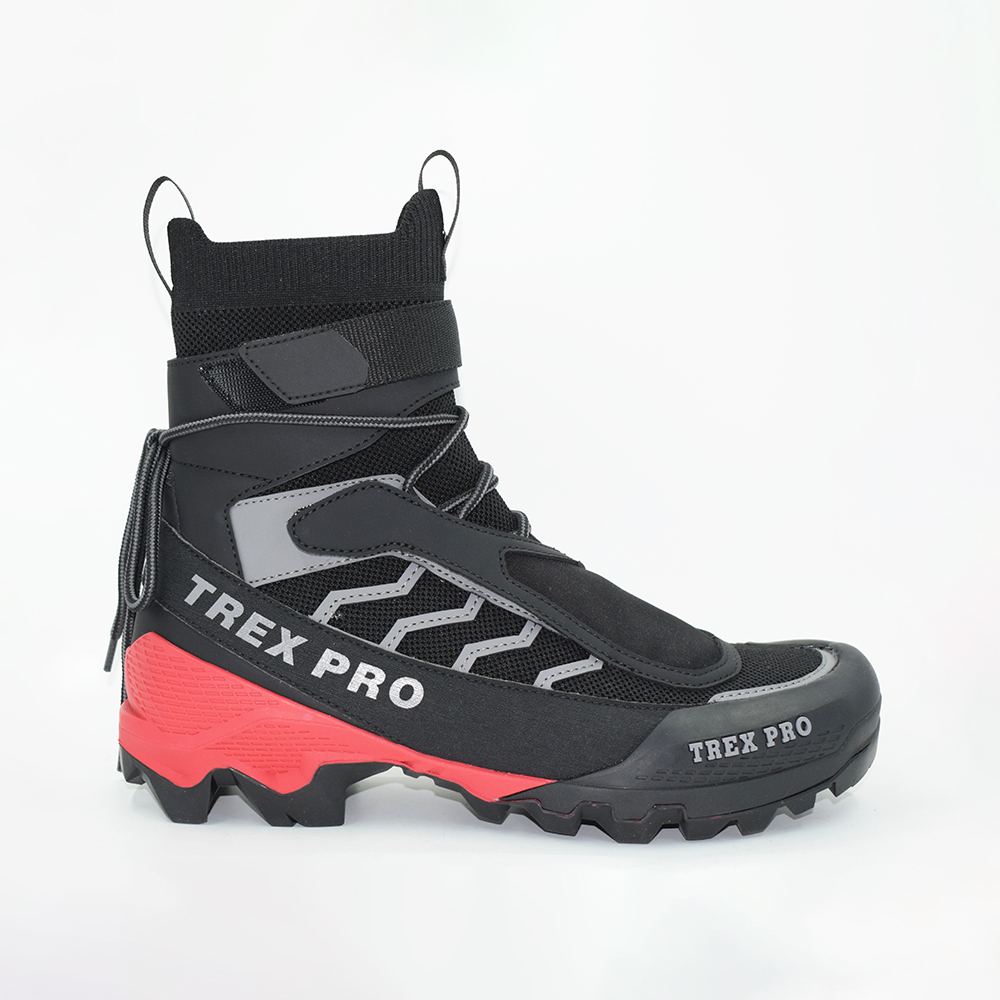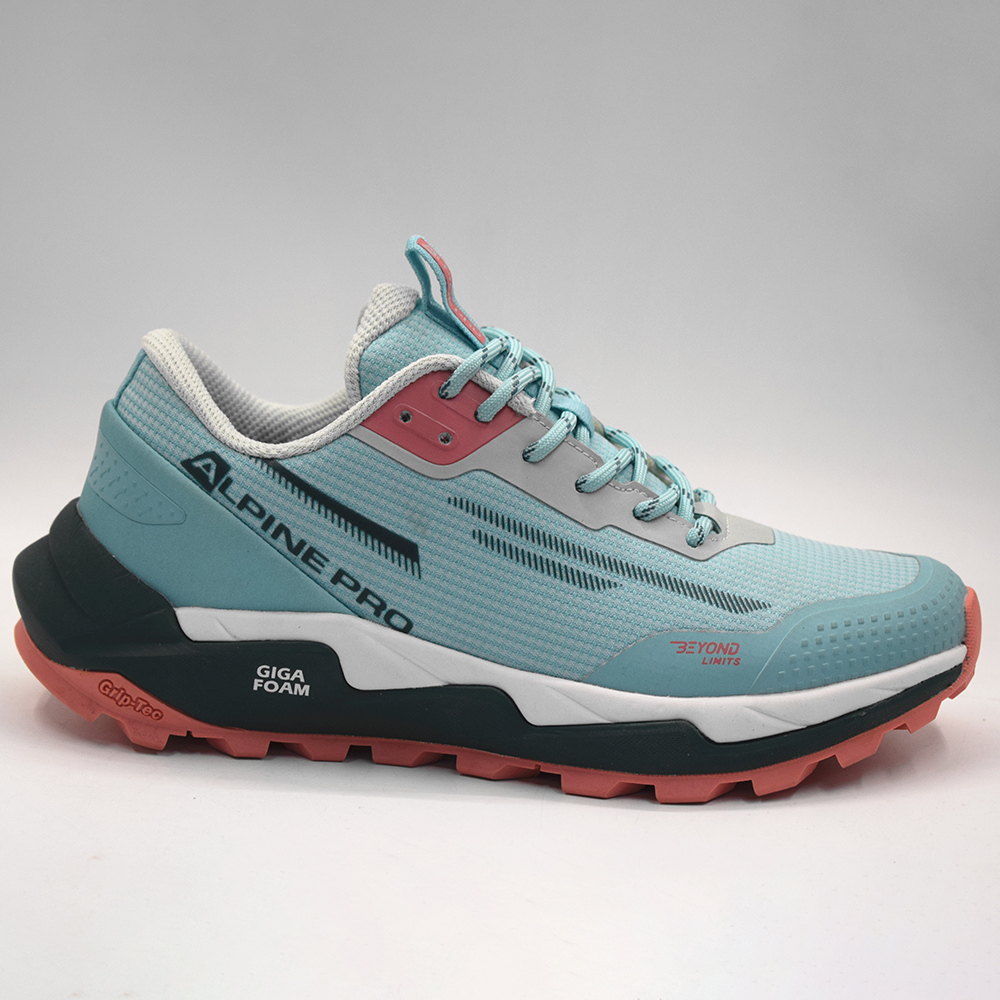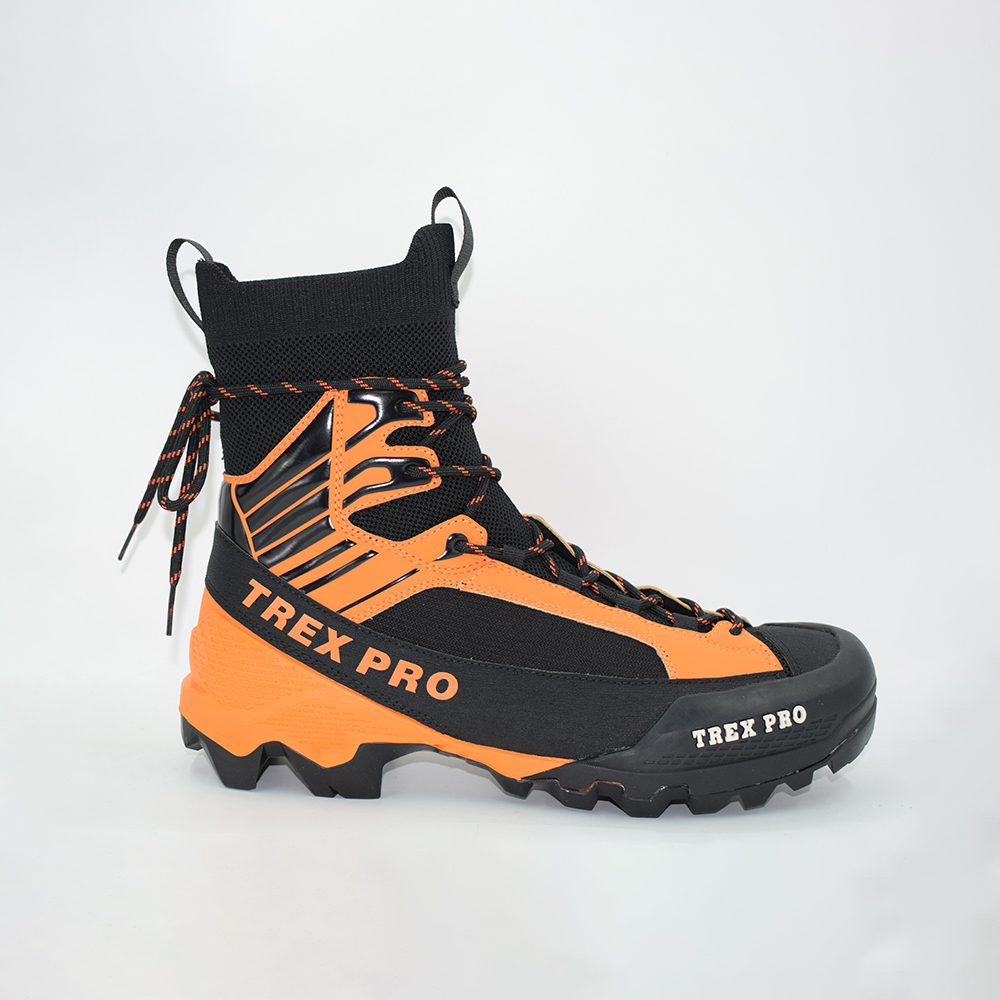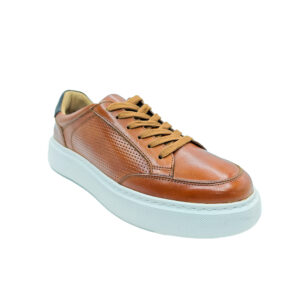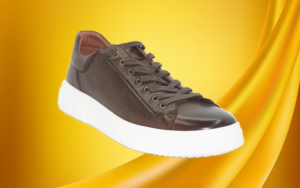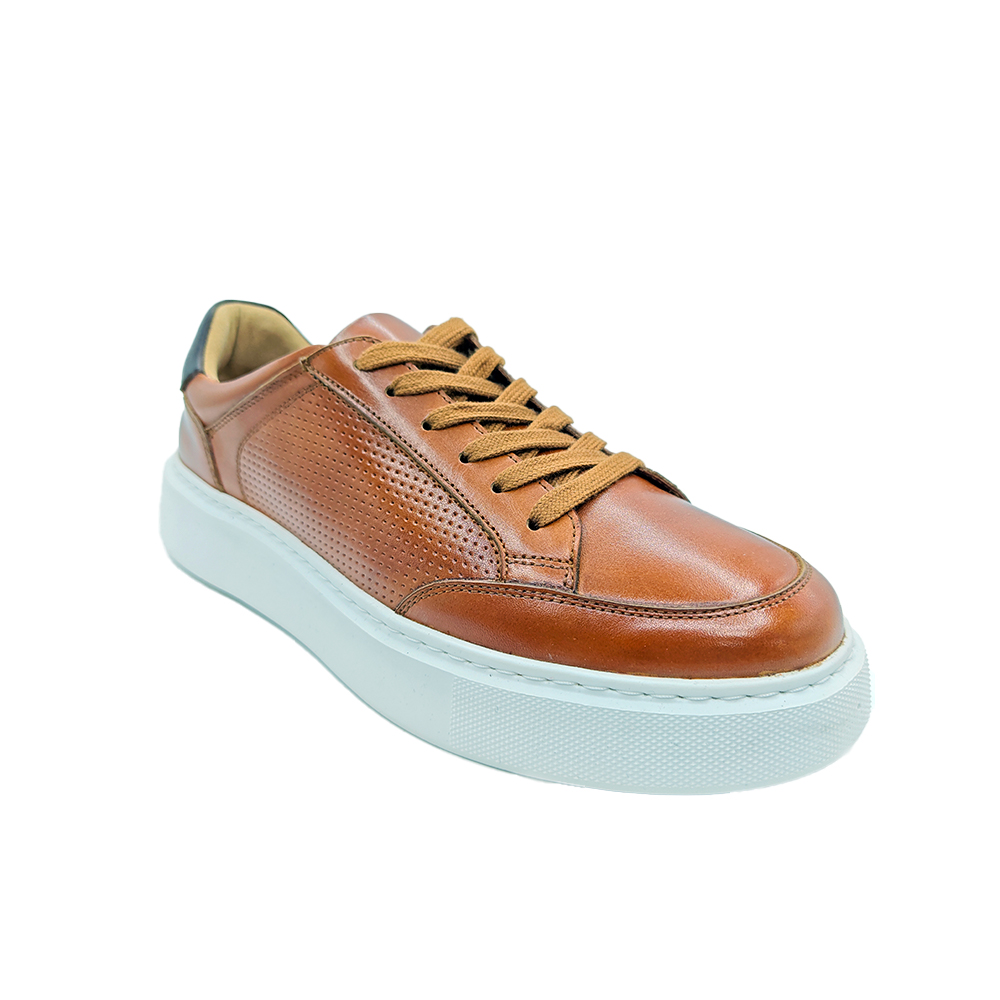Hiking shoes and sports shoes may seem similar at a glance, but they are engineered for vastly different purposes. While sports shoes prioritize agility and cushioning for high-intensity movements, hiking shoes focus on stability, protection, and durability for rugged outdoor terrain. As a manufacturer specializing in both categories, we dissect the technical, material, and design distinctions that define these footwear types. Whether you’re a trailblazer or a gym enthusiast, this guide will help you choose the right tool for your feet.
1. Technical Design: Performance Priorities
1.1 Hiking Shoes: Built for Endurance and Protection
- Ankle Support: High-cut or mid-cut designs stabilize ankles on uneven trails.
- Rock Plates: Thin, flexible inserts shield feet from sharp rocks.
- Toe Guards: Reinforced rubber caps protect against impacts.
- Waterproofing: Seam-sealed construction and membranes (e.g., Gore-Tex) keep feet dry.
1.2 Sports Shoes: Optimized for Speed and Agility
- Low-Cut Design: Enhances mobility for lateral movements (e.g., basketball, tennis).
- Cushioning Systems: Air units, gel pods, or foam midsoles (e.g., Nike Air, Adidas Boost) absorb shock during jumps and sprints.
- Flex Grooves: Deep grooves in outsoles improve forefoot flexibility for running.
2. Material Comparison: Durability vs. Lightweight Performance
2.1 Upper Materials
- Hiking Shoes:
- Full-Grain Leather: Resists abrasion and water.
- Synthetic Mesh: Breathable panels (e.g., Cordura) balance airflow and durability.
- Reinforced Welting: Prevents upper separation during rocky descents.
- Sports Shoes:
- Engineered Knit: Lightweight, stretchable uppers (e.g., Flyknit, Primeknit) enhance breathability.
- TPU Overlays: Strategic reinforcements for lateral support without added weight.
2.2 Midsole Materials
- Hiking Shoes:
- Dense EVA/PU: Provides long-lasting support under heavy loads.
- Cork Footbeds: Mold to the foot’s shape over time for personalized comfort.
- Sports Shoes:
- Responsive Foams: Energy-returning materials like Nike React or Puma Nitro.
- Carbon Fiber Plates: Stiff plates in racing shoes boost propulsion.
3. Outsole Engineering: Traction vs. Speed
3.1 Hiking Shoe Outsoles
- Material: Vibram® Megagrip, Contagrip®, or sticky rubber compounds for wet rocks.
- Tread Design:
- Deep Lugs (4–6mm): Grip loose gravel, mud, and snow.
- Self-Cleaning Grooves: Shed debris to maintain traction.
- Durability: Outsoles withstand 500+ miles of rocky terrain.
3.2 Sports Shoe Outsoles
- Material: Blown rubber (lightweight) or carbon rubber (durable).
- Tread Patterns:
- Herringbone: Multi-directional grip for basketball.
- Waffle Lugs: Trail-running shoes balance grip and flexibility.
- Flexibility: Thin, segmented lugs optimize ground contact during sprints.
4. Application-Specific Features
4.1 Hiking Shoes: Conquering the Great Outdoors
- Waterproofing: Essential for stream crossings and rainy climates.
- Gaiter Compatibility: Hooks or loops attach protective gaiters.
- Crampon Readiness: Rigid soles for mountaineering models.
4.2 Sports Shoes: Mastering the Court and Track
- Sport-Specific Designs:
- Running Shoes: Heel-to-toe drop (0–12mm) tailored to stride mechanics.
- Basketball Shoes: High-top designs and pivot points for quick cuts.
- Tennis Shoes: Durable outsoles for court abrasion.
- Ventilation: Perforations or mesh panels prevent overheating during intense activity.
5. Comfort and Support: Divergent Philosophies
5.1 Hiking Shoes: Stability Over Long Distances
- Arch Support: Rigid shanks (e.g., nylon or steel) reduce fatigue on uneven ground.
- Heel Cups: Deep, locked heels prevent blisters during descents.
- Weight: 1.5–2.5 lbs per shoe, prioritizing protection over speed.
5.2 Sports Shoes: Dynamic Responsiveness
- Heel-to-Toe Transition: Curved “rocker” soles promote smooth strides in running shoes.
- Ankle Collars: Padded collars in basketball shoes reduce friction.
- Weight: 0.5–1.2 lbs per shoe for maximum agility.
6. Durability Testing: Ruggedness vs. High-Impact Endurance
6.1 Hiking Shoes
- Abrasion Tests: Uppers endure 50,000+ rubs against sandstone (ASTM D7254).
- Flex Tests: Outsoles survive 150,000+ bends (SATRA TM144).
- Waterproof Tests: Submersion for 60+ minutes without leakage (ISO 20344).
6.2 Sports Shoes
- Compression Tests: Midsoles retain 70% cushioning after 500k impacts (ISO 22675).
- Torsion Tests: Outsoles resist twisting forces during lateral cuts.
7. Customization Options: Tailoring to Needs
7.1 Hiking Shoes
- Insulation Choices: Non-insulated, PrimaLoft®, or Thinsulate™ for winter.
- Sole Swap: Replace worn Vibram® soles with eco-friendly alternatives.
7.2 Sports Shoes
- Fit Customization: Adjustable lacing systems (e.g., BOA) or elastic uppers.
- Orthotic Compatibility: Removable insoles for medical orthotics.
8. Sustainability in Hiking and Sports Shoes
8.1 Hiking Shoes
- Recycled Materials: Post-consumer PET uppers and algae-based foams.
- Resoling Programs: Extend shoe life by replacing soles.
8.2 Sports Shoes
- Circular Design: Brands like Adidas offer 100% recyclable running shoes.
- Plant-Based Foams: Allbirds’ SweetFoam or Nike’s Grind materials.
-
Rated 0 out of 5
-
Rated 0 out of 5
-
Rated 0 out of 5
-
Rated 0 out of 5
9. Price Comparison: Investment vs. Performance
9.1 Hiking Shoes
- Entry-Level: 80–80–120 (synthetic uppers, basic waterproofing).
- Premium: 200–200–350 (full-grain leather, Vibram® outsoles, Gore-Tex).
9.2 Sports Shoes
- Running Shoes: 100–100–180 (foam midsoles, breathable uppers).
- Elite Models: $250+ (carbon fiber plates, advanced energy return).
10. When to Choose Hiking Shoes vs. Sports Shoes
10.1 Opt for Hiking Shoes If…
- You’re trekking on rocky, wet, or uneven terrain.
- You need ankle support and waterproofing.
- You carry heavy backpacks (20+ lbs).
10.2 Opt for Sports Shoes If…
- You’re running, jumping, or making lateral cuts.
- You prioritize lightweight flexibility and breathability.
- You’re on paved roads, tracks, or indoor courts.
The Right Tool for the Task
Hiking shoes and sports shoes excel in their respective arenas because they’re engineered with distinct goals. Hiking shoes are armored tanks—built to protect, endure, and conquer nature’s challenges. Sports shoes are race cars—designed for speed, agility, and explosive movements. By understanding their technical DNA, you can invest in footwear that elevates your performance, whether you’re summiting peaks or breaking personal records.

